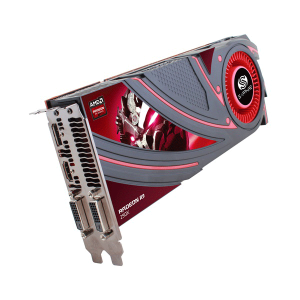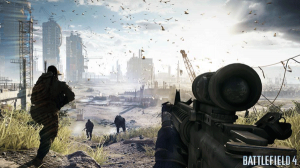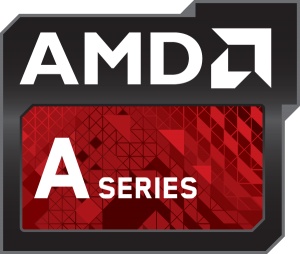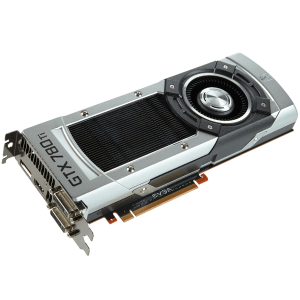 Many people are probably not familiar with the early years of 3D gaming on the PC. There were a large number of companies producing graphics processor that dealt with the 3D geometry differently. In order for the hardware to work, the game had to be written specifically for that graphics card. This meant that sometimes you encountered games that might not run properly on your chosen graphics card. 3DFX was one company that succeeded well during this time because of their standardized Voodoo API and strong developer support.
Many people are probably not familiar with the early years of 3D gaming on the PC. There were a large number of companies producing graphics processor that dealt with the 3D geometry differently. In order for the hardware to work, the game had to be written specifically for that graphics card. This meant that sometimes you encountered games that might not run properly on your chosen graphics card. 3DFX was one company that succeeded well during this time because of their standardized Voodoo API and strong developer support.
Eventually, Microsoft standardized the software side of the games with Direct X that allowed a common programming API that could then be translated to the various hardware of the graphics cards. The eventually success of the API lead to the consolidation down to the two graphics card companies that we have today, AMD and NVIDIA. Over time, the Direct X API evolved but so has the complexity such that graphics performance gains are not as dramatic between generations of graphics cards. Now AMD is looking to go back to a more simplistic direct API system that would supposedly improve the performance of games with its graphics cards. Is this going to be the future of PC gaming?
What is Mantle?
 Last October, AMD announced when they launched their graphics cards with the Radeon R9 and R7 names. Not much information was given at the time other than to say that it was a replacement API that would bypass the Direct X graphics system to provide a more efficient pipeline between the software and the graphics card. In order for Mantle to be effective, three conditions needed to be met:
Last October, AMD announced when they launched their graphics cards with the Radeon R9 and R7 names. Not much information was given at the time other than to say that it was a replacement API that would bypass the Direct X graphics system to provide a more efficient pipeline between the software and the graphics card. In order for Mantle to be effective, three conditions needed to be met:
- The PC’s graphics processor must have a Graphics Core Next (GCN) architecture from AMD
- The graphics card driver in AMD Catalyst Suite must be compatible with the graphics card and Mantle
- The game in question needs to be written with the Mantle API
Many people with AMD based graphics cards already meet the first condition. The Graphics Core Next was first implemented back in the Radeon 7000 series processors. The second item is now being addressed with the recent release of the drivers. The last part is a bit more difficult as the only game currently available with Mantle support is Battlefield 4. Additional games will likely trickle out through the year.
How It Will Benefit Gamers
In essence, the bypassing of the Direct X API and allowing a graphics engine within a game to directly access the GCN hardware will reduce the amount of overhead that the game has to deal with. With the existing Direct X 11, that overhead is quite high. By reducing the amount of calls required by the software, the graphics card can spend more time processing data rather than waiting for it. In addition to this, some of the burden from tasks handled by the CPU could be offloaded to the more efficient graphics core. The net result is that it can produce higher frame rates and more detail than it would under the standard Direct X rendering engine.
 Now there have been claims made by developers about how Mantle has impacted their games. For instance, EA claims that some hardware has seen up to . Oxide games has also claimed that using Mantle has provided their upcoming game .
Now there have been claims made by developers about how Mantle has impacted their games. For instance, EA claims that some hardware has seen up to . Oxide games has also claimed that using Mantle has provided their upcoming game .
Even with these claims, details about the real world benefits are pretty minimal right now. The best data so far that I have seen comes from . They only had a single hardware setup in the preview that was pretty high end. What they did notice that was the best benefits seemed to be reflected when the game was run at lower 1080p resolutions. So in essence, when the game engine is more CPU bound rather than GPU bound, the performance benefits were more tangible.
Low End vs. High End Gamers
 At this point, it seems that the people that are most likely to see a benefit to the performance of Mantle based games are those with more limited hardware. For instance, if the CPU is relatively low end (Core i3, AMD A4 or A6) but you have more powerful graphics card (R280 and higher), you will see a greater benefit from the offloading of tasks from the CPU to the graphics card. This is a big goal for AMD as it might make their APU product lines that include a Radeon GCN graphics core more attractive for low cost gaming rigs. This makes sense since Mantle was designed to take advantage of the hardware present in both the XBox One and PlayStation 4. Both of these systems have far more graphics capability than the general processing as a means to cut down costs. This helps improve the efficiency for the games on the hardware.
At this point, it seems that the people that are most likely to see a benefit to the performance of Mantle based games are those with more limited hardware. For instance, if the CPU is relatively low end (Core i3, AMD A4 or A6) but you have more powerful graphics card (R280 and higher), you will see a greater benefit from the offloading of tasks from the CPU to the graphics card. This is a big goal for AMD as it might make their APU product lines that include a Radeon GCN graphics core more attractive for low cost gaming rigs. This makes sense since Mantle was designed to take advantage of the hardware present in both the XBox One and PlayStation 4. Both of these systems have far more graphics capability than the general processing as a means to cut down costs. This helps improve the efficiency for the games on the hardware.
PC’s are very different, especially when they are purposely built for high end gaming. After all, many PCs are available now that are capable of playing modern games at acceptable frame rates with a 1080p resolution. The issue is that most high end gamers are pushing beyond that thanks to 2560×1440 and 4K displays. The added graphics resolution puts a much greater burden on the GPU. The result is that the GPUs are already having to keep up with the CPU so there is less efficiency there and the benefits less dramatic. After all, EA gets a 58% increase when running a multi-GPU setup with a very low 1080p resolution but HardOCP gets a much lower 7% increase when running a single GPU at a higher 2560×1600 resolution.
The Pitfalls
 There are so many things that are going against AMD’s Mantle from being a wide spread success. One of the big factors against it right now is that NVIDIA has the larger percentage of the market. According to , it is at roughly 52% for NVIDIA compared to 31% for AMD. Unless the benefits are much larger than the current beta numbers in Battlefield 4 show, those NVIDIA customers are not likely going to switch to an AMD graphics card.
There are so many things that are going against AMD’s Mantle from being a wide spread success. One of the big factors against it right now is that NVIDIA has the larger percentage of the market. According to , it is at roughly 52% for NVIDIA compared to 31% for AMD. Unless the benefits are much larger than the current beta numbers in Battlefield 4 show, those NVIDIA customers are not likely going to switch to an AMD graphics card.
Then there is the fact that the developer has to support Mantle in their game. This requires additional engineers and coding that adds to the already high cost of many top tier PC games. This is offset somewhat by the fact that both the new XBox One and Playstation 4 developers can use Mantle which will help offset the costs of moving it to the PC with Mantle support. Then again, is the market sufficient enough to offer gamers incentive to go with the PC version rather than the console versions? GTA V is one of the largest selling games but it has yet to be released for the PC.
Finally, there is the fact that if the Mantle program is successful, NVIDIA will more than likely respond with their own hardware specific API to offer direct hardware performance benefits similar to Mantle. This will then lead us back to a situation from the early years of 3D gaming with either limited hardware support by the games or the eventual support of another unified graphics API to make it easier for developers to produce for both.
